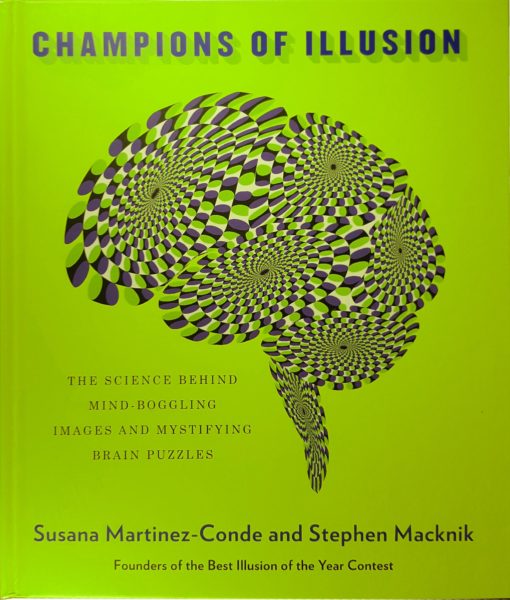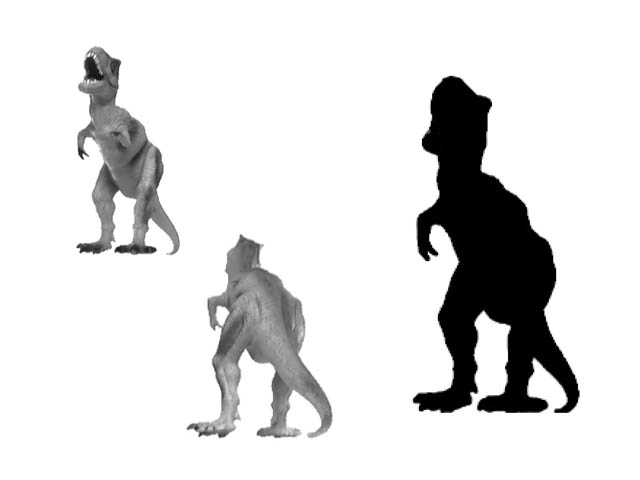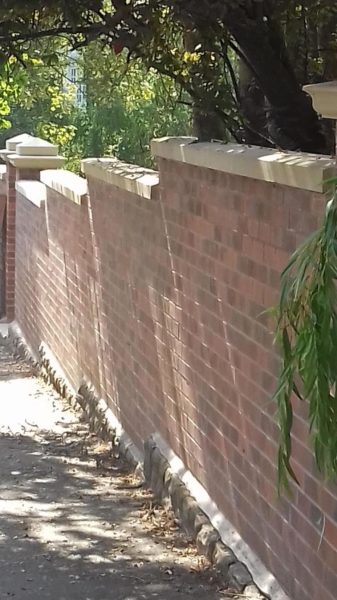Do you remember the children in Spielberg’s Jurassic Park, who were invisible to the velociraptor if only they kept still, because the velociraptor could supposedly see only moving prey? (actually, that was probably not true – real velociraptors could see static objects just fine). All the more reason to think that there is no equivalent component in our own vision. However there is. Even if a scene is camouflaged with an overall texture so that no edges, colours or texture gradients are visible, its features can still spring into depth if only the observer or scene components move, thanks to our sensitivity to optical flow – the way that different parts of the camouflaging texture move at different velocities and directions. But if both observer and scene movement stop, the scene vanishes.
We are usually completely unaware of this component of our vision, but with computer animation we can make it explicit. In the three examples in our movie, as soon as movement stops the scene in depth rapidly fades into a two-dimensional texture. When movement restarts, the scene springs into depth, apparently instantly. In fact it seems to happen fantastically fast – within about 1/20th of a second, or within just 3 or 4 frames of an animation running at 60 frames a second.
Such speed of response is essential because we depend on this component of our visual system not just to help us make sense of the space we are in, but to keep our balance and sense our own motion within it.
Thanks to Chris Tyler for pointing out this effect to me. See our Youtube movie Emergent City Flyby with a Colossus.
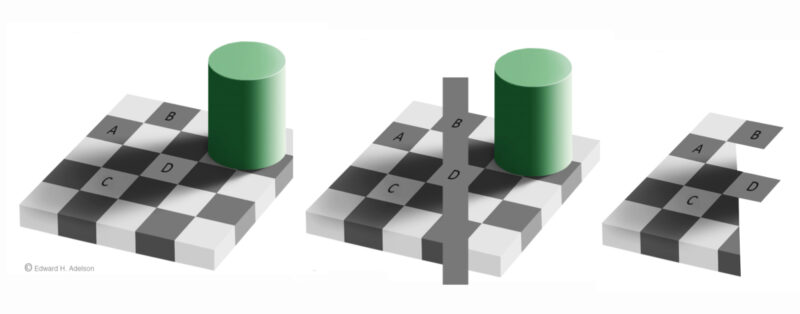
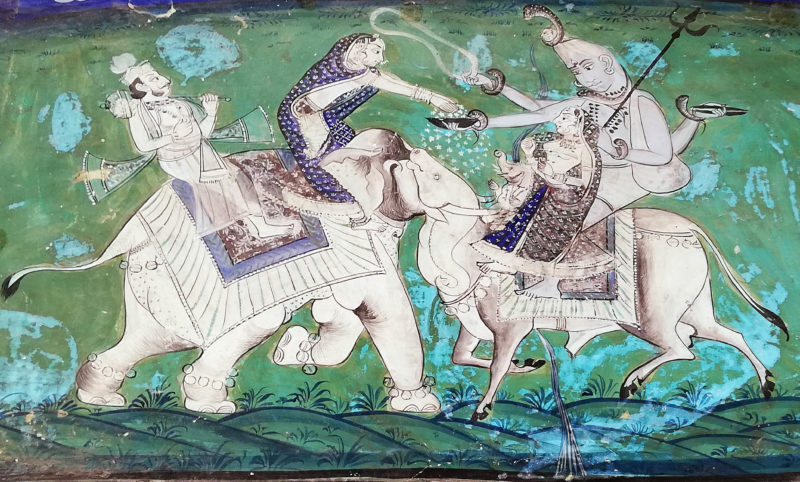
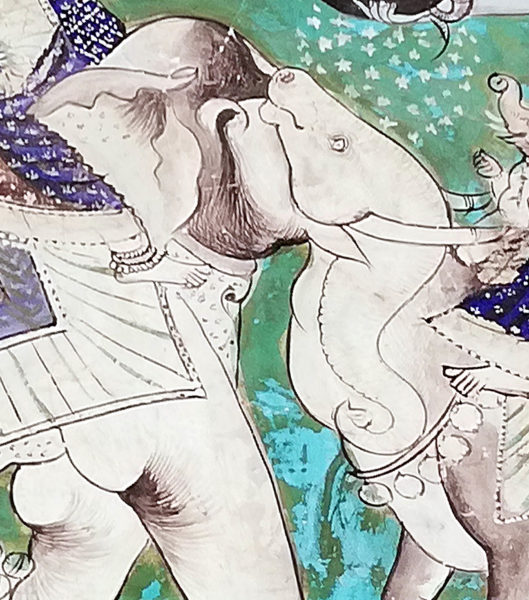 Photos © Michaela Butter
Photos © Michaela Butter